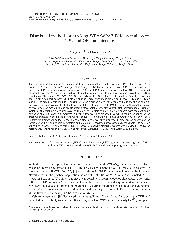摘要
To overcome the limitations of the existing brute force cracking method of Wi-Fi Protected Access/Wi-Fi Protected Access II (WPA/WPA2)-pre-shared key (PSK) based on single core CPU or one core of a multi-core CPU, a new distributed multi-core CPU and GPU parallel cracking method (DMCG) was first proposed. Colored Petri nets was used to validate the four-way handshake protocol and proved that DMCG could successfully crack WPA/WPA2-PSK. In DMCG, the PSK list was distributed to each PC reasonably using distributed technology. Multiple computing cores were made up of multi-core CPU and GPU on single PC to crack in parallel. GPU contributed to the cracking speed improvement due to the strong computing power for intensive parallel tasks. Experimental results showed that DMCG improved the cracking speed by two orders of magnitude and would exhibit more notable advantages with high-performance distributed system as the cracking speed improved by three or four orders of magnitude, compared with the computing power of one CPU core. An improved Amdahl's law was first proposed, by which the upper bound of the cracking speedup was analyzed. Aiming to the DMCG expansion of cloud computing based on GPU, a lightweight framework called Dandelion computing model was first proposed. Moreover, the analysis of the influences of the graphics card parameters on the cracking speed was processed, and accordingly, the decision support for choosing graphics card in DMCG based on analytic hierarchy process was provided. Finally, the performance optimization of DMCG was processed.
- 出版日期2015-3-10
- 单位天津大学
